When it comes to working safely at heights, whether you’re a homeowner undertaking a DIY project, or involved in the building and construction industry, understanding the risks and safety measures is crucial.
Construction sites are risky environments, and accidents can lead to severe injuries or fatalities. Historically, construction workers have suffered more fatal and nonfatal injuries than other industries, and the risk is particularly high for workers at elevated heights.
This step-by-step guide outlines the common hazards associated with working at heights and managing risks. These practical, easy-to-implement strategies ensure your safety and the safety of those around you, all while complying with Australian safety standards.
Understanding hazard risks
In Australia, you are considered to be working at a height if it is 2 metres (6.56 feet) or higher. This can include activities such as roof work, work that involves ladders, scaffolding, or work near an excavation site.
When working from heights, the most obvious safety hazard is falling. However, a dropped tool or piece of equipment can cause severe injury or even death. For instance, improper use of ladders, such as incorrect sizes or positioning, poses a risk and may lead to injury.
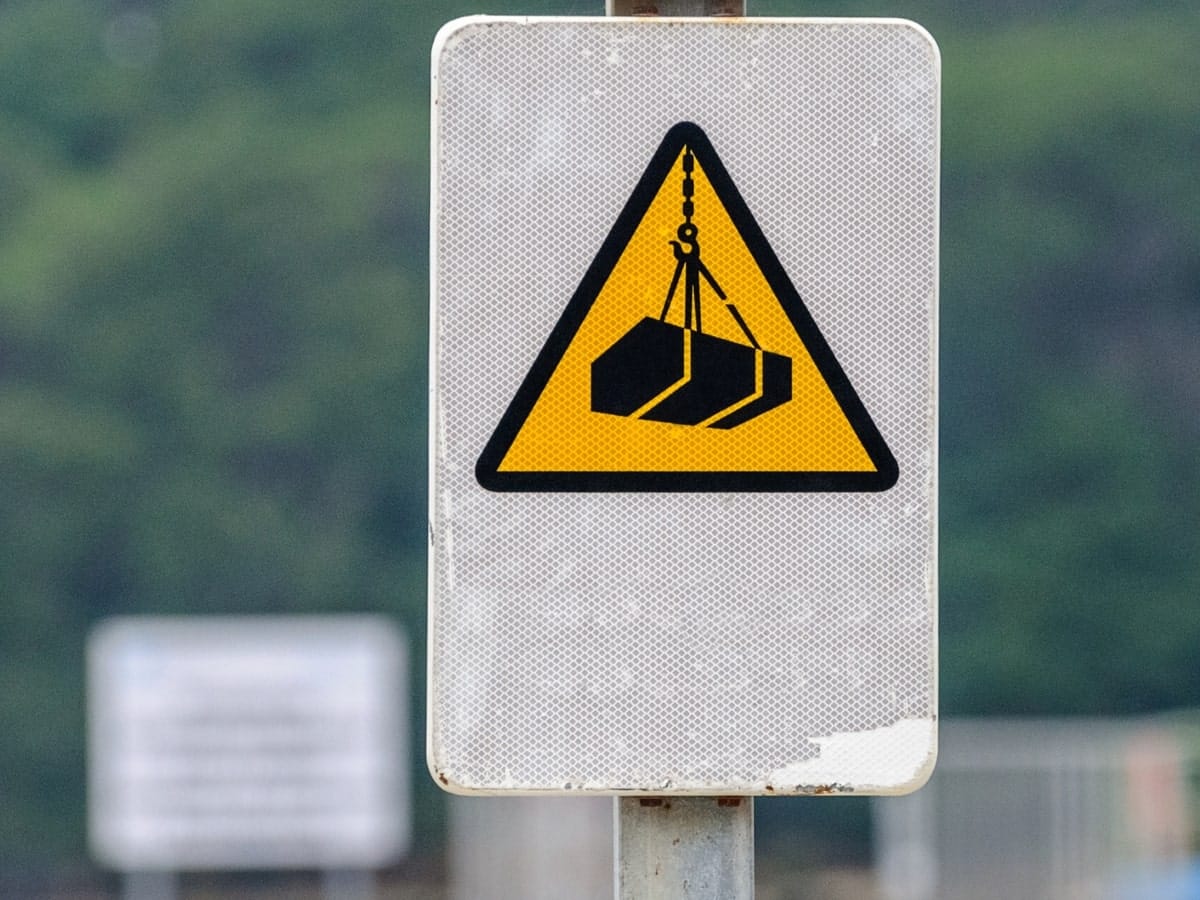
Securing construction sites with effective fencing
When individuals enter construction sites without proper authorisation, they unwittingly expose themselves to a range of dangers, including the risk of slips, trips, and falls, which can often result in serious injuries or even fatalities. Additionally, the potential hazard of falling debris adds another layer of risk to unauthorised access.
Security fencing serves as a deterrent, not only preventing unauthorised access but also safeguarding against potential accidents and injuries.
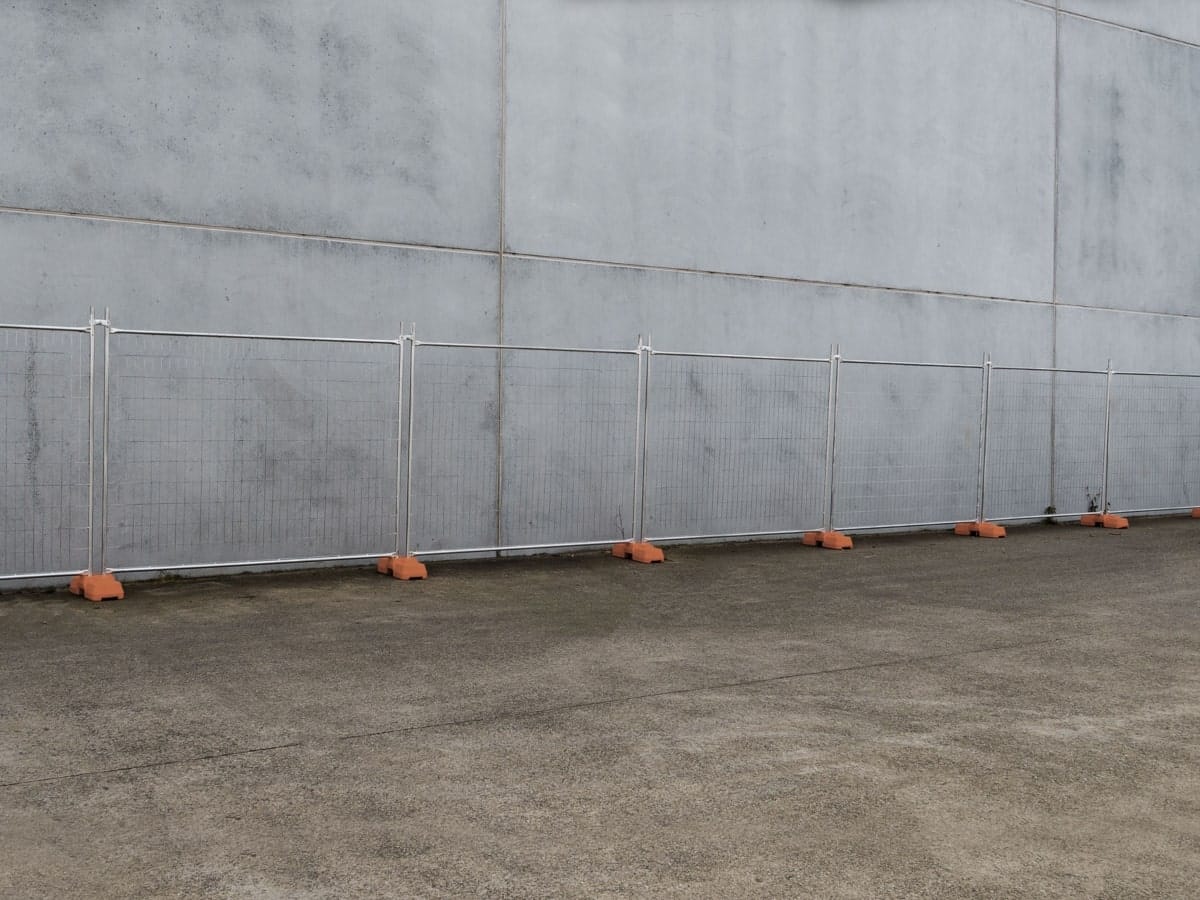
By implementing secure temporary fencing, construction sites can significantly minimise the risk of fall hazards and maintain a safer environment for workers and the public.
Risk assessment
A thorough risk assessment is an important part of ensuring your safety or that of your workers at heights. This involves identifying potential construction site hazards and evaluating associated risks to implement effective control measures.
You can start by identifying all hazards associated with working at heights. These may include elevated work surfaces, the use of ladders or scaffolds, as well as exposure to unprotected edges.
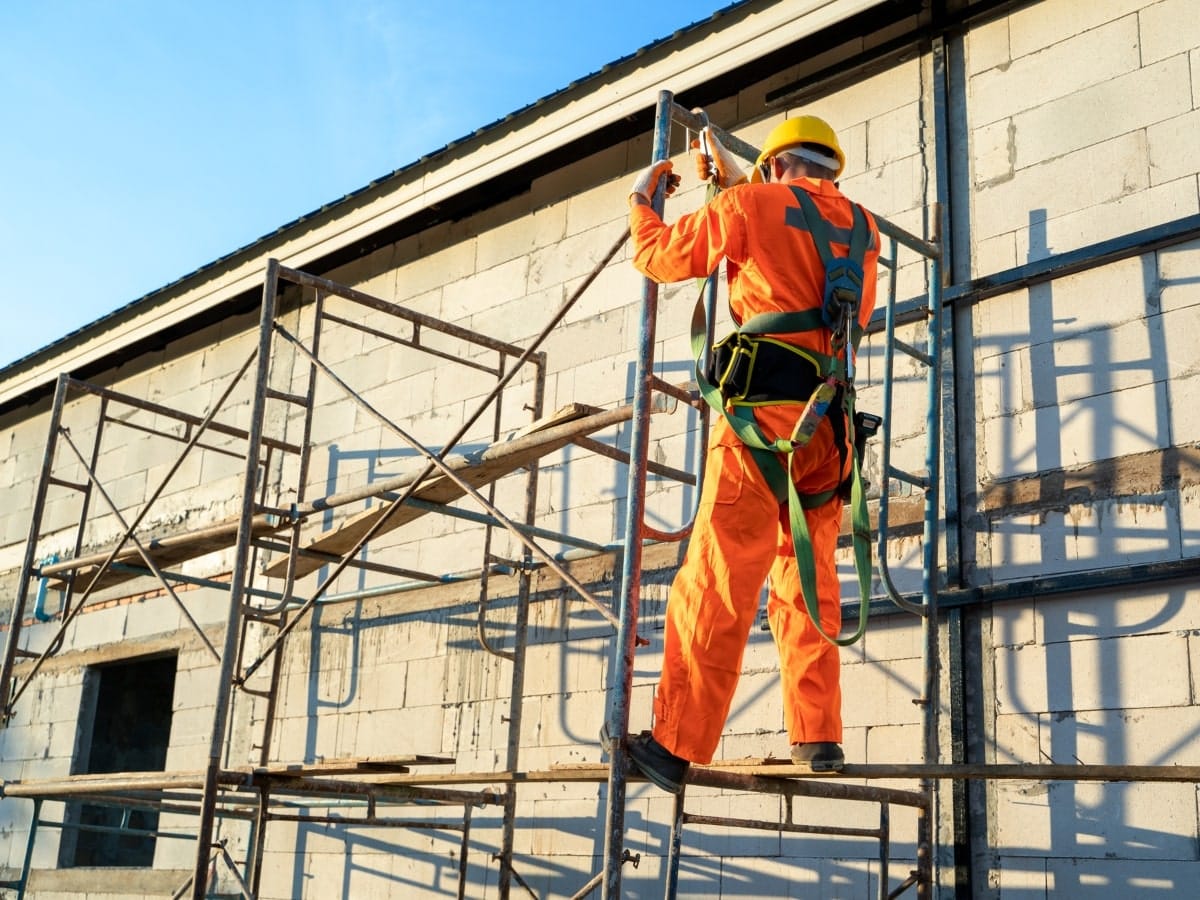
It’s also essential to conduct an environmental assessment to flag potential hazards associated with the environment. This can include evaluating weather conditions such as wind, rain, or temperature variations. Other environmental hazards include loose debris, wildlife, and vegetation, as they may affect safety or limit the use of certain tools.
Once you have identified the hazards, set up control measures to minimise these risks. For instance, you can implement administrative measures or introduce guardrails or safety nets.
Regulatory compliance for working safely at heights
The regulatory framework in Australia stipulates that persons conducting a business or undertaking (PCBUs) should ensure the health and safety of workers and others at their workplace. In many cases, a Safe Work Method Statement (SWMS) is used to outline the systematic approach to managing and performing high-risk construction work safely.
Some of the working at height WHS duties and regulations include:
Identifying hazards
Assessing risks associated with working at heights, including the nature of the work, height involved, temporary work platforms and environmental factors.
Implementing control measures
Manage risks through control methods such as planning, safe work practices, fall arrest system, personal protective equipment and training.

Safe systems of work
The main purpose of safety equipment in elevated work environments is to prevent falls and enhance the overall safety of the construction site.
Developing and implementing safe work procedures for specific tasks like working on roofs, ladders, scaffolding, and elevated work platforms.
An effective system to ensure safety and prevent falls must be in place, which involves the following measures:
- Implementing a fall prevention device, such as barricading, scaffolding, or elevating work platforms.
- In cases where fall prevention is not feasible, employ a work positioning system, like an industrial rope access system.
- As a last resort, use a fall arrest system, such as scaffold netting, industrial safety nets or catch platforms, to mitigate the risk of falls.
Training and supervision
Ensuring workers receive appropriate training on working at heights and are adequately supervised
Regular inspections
It is important to carry out routine inspections of protective equipment and the construction site to assess the risks that may arise for workers at heights. Ensure annual inspections by skilled professionals to identify potential hazards and assess the equipment’s condition.
Also, encourage the workers to conduct pre-use checks before each use. These checks focus on quickly ensuring that the equipment is visibly in good condition and suitable for use.
Training and awareness
Every year, working at heights remains a leading cause of fatalities at work, with construction workers most at risk of a fall. If you want your employees to work safely at heights, you must provide the requisite training. This is especially important for new workers so they can integrate well with the team and continue to promote a safety-first policy.
Emergency procedures
Even with the appropriate measures, accidents involving workers at heights may still occur. A well-thought-out emergency plan can mean the difference between life and death, so always have a clear course of action in case of an incident. Some emergency procedures you can initiate include the following:
- Assess the situation: If the injured person is conscious, ask about their injuries and reassure them. If they are unconscious, proceed to give first aid immediately. Dial 000 for emergency services in Australia and provide clear details about the accident, location, and number of people involved.
- Provide first aid: If you have first aid training, administer appropriate care for the injuries. Apply direct pressure to wounds to stop bleeding and use splints or bandages to stabilise limbs.
- Initiate rescue (if necessary): Clear the area below the rescue zone to prevent further accidents and use fall arrest systems, harnesses, ropes, ladders, or other designated rescue equipment. Proceed with caution and avoid any actions that could endanger the rescuer or the injured person.
- Complete incident reporting: Record the details of the accident, injuries, actions taken, and any witnesses. Submit incident reports as required by your workplace and any relevant regulatory bodies.
Safe work practices
Following a set of crucial do’s for a safe and efficient work environment is essential to protect workers when working at heights. These include:
- Complete as many tasks as possible on the ground or solid construction.
- Ensure employees can safely access elevated work areas and move between them.
- Use strong and suitable equipment for the job at hand.
- Exercise caution when working near fragile surfaces, and always take measures to protect yourself from falling objects.
- Have a comprehensive plan in place in case of emergency evacuations and rescues.
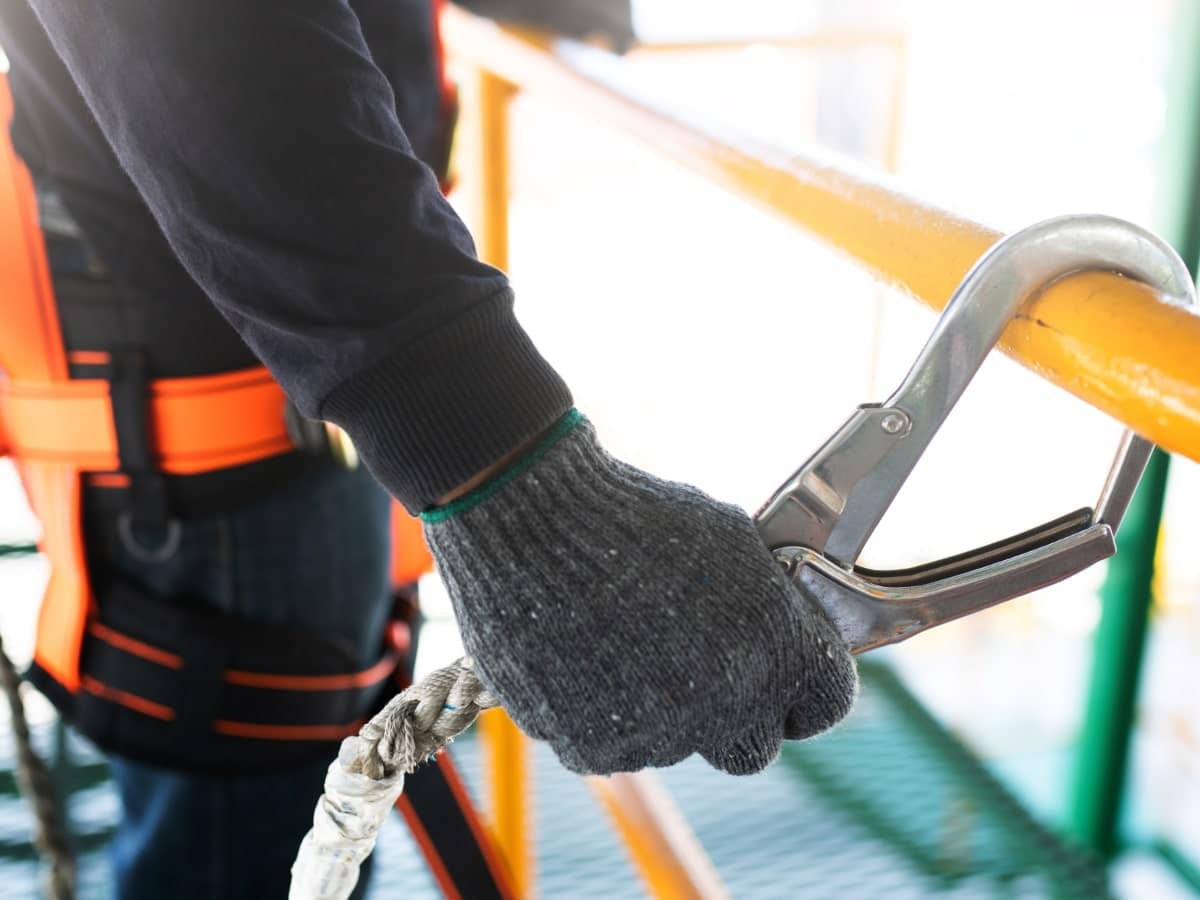
Creating a safety culture
Although the construction industry has some of the highest injury occurrences, a safety-first mindset promotes consistent adherence to safety practices. Building a safety culture within your team ensures your workers are on board with safety as a priority.
Are you planning your next construction job? TTFS offers temporary fencing, construction safety equipment, and site accessories, including scaffold net rolls to help prevent accidental falls.
Get in touch with our knowledgeable team today by calling 1300 876 614 or by completing an enquiry form online.
FAQs
What height is considered “working at height” in Australia?
In Australia, working at a height is any work conducted at 2 metres (6.56 feet) or higher. This includes roof work, ladder usage, scaffolding, or work near excavation sites.
What are some common hazards when working at heights?
The primary hazard when working at heights is the risk of falling. Other dangers include equipment misuse, unstable surfaces, adverse weather conditions, and the potential for dropped tools or equipment to cause harm.
What is the importance of a Safe Work Method Statement in working at heights?
A SWMS outlines a systematic approach to managing high-risk construction work safely. It includes identifying hazards, implementing control measures, ensuring compliance with regulatory requirements, and contributing to a safer work environment.

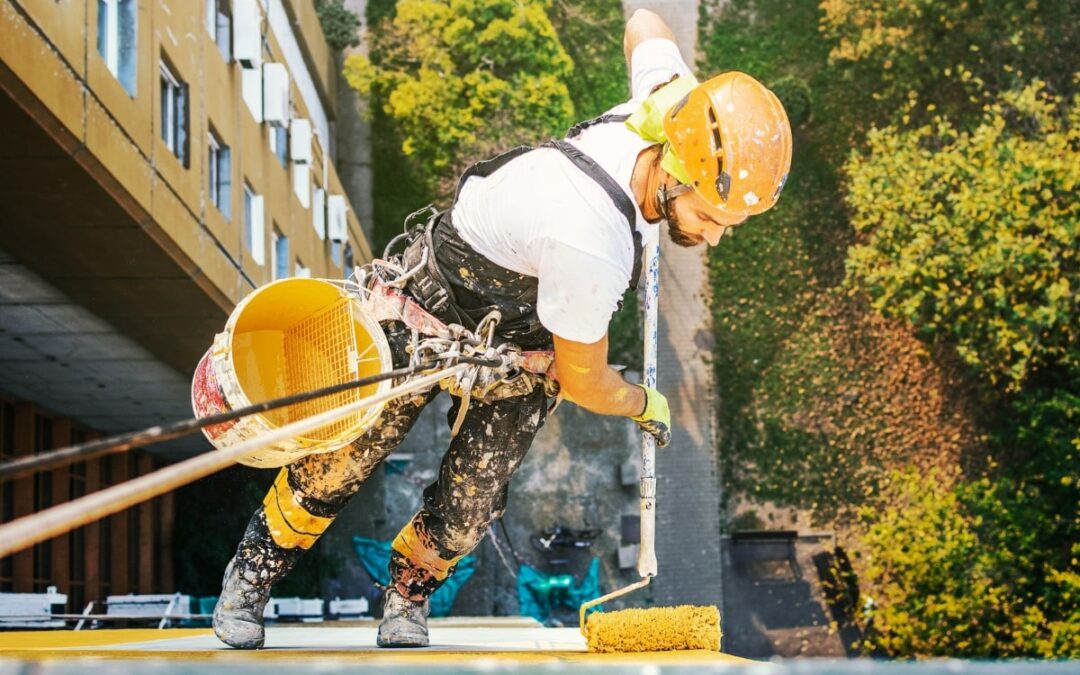
Recent Comments